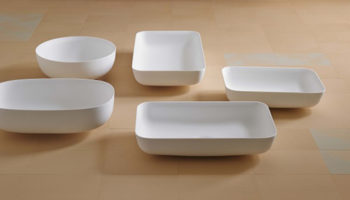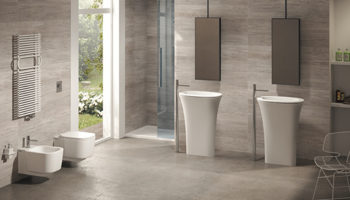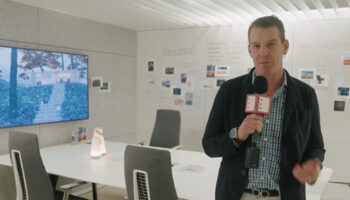Ekateryna Sokolova’s Iris: Where’s the Water to Go?
I’m not quite sure what to make of it – because I’m not quite sure how it works. Don’t get me wrong, the idea is simple. Ekateryna Sokolova’s concept washbasin “Iris” is manufactured from a single sheet of material (corian or metal), bent into a sinuous form. As a result of the materiality, the washbasin is lightweight and elegant, while retaining its strength. So wherein lies the problem? The pragmatic concept of drainage.
Iris. Designed by Ekateryna Sokolova.
The bends and folds expose the underside of the material, revealing a secondary color – and the resemblance of a flower. Simultaneously, a functional shelf is created for storage of towels, accessories and cosmetics. This form folds inwards such that the water funnels into the naturally formed crevice (or hole). But where does it go from here? According to the images – it hits the floor. The wall-mounted basin reveals no drainage technology, and no means of integrating any that would simultaneously manage to maintain the integrity of the design. I understand that it’s a concept – but it doesn’t seem capable of becoming a reality. The addition of a drainage pipe would visually destroy the design – yet its elimination prevents the design from serving as an actual sink. While we could store our towels, we couldn’t wash our hands.



The designer, Ekateryna Sokolova from Kiev, Ukraine, is also responsible for another basin concept Aqua Vita. This is a free-standing sink that functions more or less per usual: the base serves as the means of connecting the sink to the pipes within a building. It seems to better capitalize on the woven-sheet concept, creating a piece that is both beautiful and functional. As the saying goes: design is in the details. Iris is in need of a drainage detail to propel it from concept to reality. Any ideas?




Leave a Reply